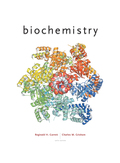
Concept explainers
Answers to all problems are at the end of this book. Detailed solutions are available in the Student Solutions Manual, Study Guide, and Problems Book.
The Principle of Molecular Recognition Through Structural Complementarity
To explain:
How proteins interact with various biomolecules through molecular surfaces which are structurally complementary.
Introduction:
Proteins are made up of amino acids. Diversity of these amino acids is the key feature that enable proteins to interact with other biomolecules with various kinds of characteristics. Some amino acids are nonpolar (alanine, cysteine, glycine, isoleucine, leucine); they are very important in forming hydrophobic interactions. There are polar amino acids (serine, threonine, cysteine, asparagine, glutamine, and tyrosine); they involve in dipole-dipole interactions and H bonding. These polar amino acids are very important in forming interactions with polar carbohydrates. There are charged amino acids depending on the physiochemical pH value.
Explanation of Solution
Structural features that are formed as a result of diversity of the building blocks (amino acid) of proteins enable them to form interactions with various kinds of chemical species. For an example lysine and arginine (+ charge), aspartate and glutamate (- charge) can get charged based on the pH value of the medium. Thus, they can interact with charged species. Nucleic acids consist of pentose sugars, phosphate groups and nitrogenous bases. In general, nucleic acids interact with proteins forming various deferent interactions that includes hydrogen bonding, electrostatic interactions as well as dipole-dipole interactions.
When a protein is made up with the incorporation of various amino acids, they provide unique structural properties for the protein. Thus, they can interact with various biomolecules through these structural features.
Want to see more full solutions like this?
Chapter 1 Solutions
EBK BIOCHEMISTRY
- The following data were recorded for the enzyme catalyzed conversion of S -> P. Question: Estimate the Vmax and Km. What would be the rate at 2.5 and 5.0 x 10-5 M [S] ?arrow_forwardPlease helparrow_forwardThe following data were recorded for the enzyme catalyzed conversion of S -> P Question: what would the rate be at 5.0 x 10-5 M [S] and the enzyme concentration was doubled? Also, the rate given in the table is from product accumulation after 10 minuets of reaction time. Verify these rates represent a true initial rate (less than 5% turnover). Please helparrow_forward
- The following data was obtained on isocitrate lyase from an algal species. Identify the reaction catalyzed by this enzyme, deduce the KM and Vmax , and determine the nature of the inhibition by oxaloacetate. Please helparrow_forwardIn the table below, there are sketches of four crystals made of positively-charged cations and negatively-charged anions. Rank these crystals in decreasing order of stability (or equivalently increasing order of energy). That is, select "1" below the most stable (lowest energy) crystal. Select "2" below the next most stable (next lowest energy) crystal, and so forth. A B 鹽 (Choose one) +2 C +2 +2 (Choose one) D 鹽雞 (Choose one) (Choose one)arrow_forward1. Draw the structures for the fats A. 16:2: w-3 and B. 18:3:49,12,15 2. Name each of the molecules below (image attached)arrow_forward
- draw the structures for the fats A. 16:2:w-3 B 18:3:9,12,15arrow_forward1. Below is a template strand of DNA. Show the mRNA and protein that would result. label the ends of the molecules ( refer to attached image)arrow_forwardAttach the followina labels to the diagram below: helicase, single stranded binding proteins, lagging strand, leading strand, DNA polymerase, primase, 5' ends (3), 3' ends (3) (image attached)arrow_forward
- 1. How much energy in terms of ATP can be obtained from tristearin (stearate is 18:0) Show steps pleasearrow_forwardMultiple choice urgent!!arrow_forward1. Write the transamination reaction for alanine. Indicate what happens next to each of the molecules in the reaction, and under what conditions it happens. 2.arrow_forward
 BiochemistryBiochemistryISBN:9781305577206Author:Reginald H. Garrett, Charles M. GrishamPublisher:Cengage Learning
BiochemistryBiochemistryISBN:9781305577206Author:Reginald H. Garrett, Charles M. GrishamPublisher:Cengage Learning
